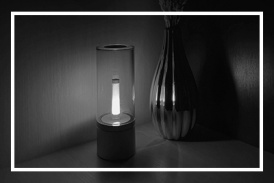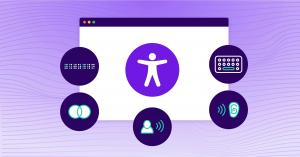Assistive Technology Market Expected to Surpass USD 35.66 Billion by 2032, Registering CAGR of 5%
Assistive Technology Market Research Report Information By Product Type, By Disability Type, By Age Group, By End User, and Region
MI, UNITED STATES, May 13, 2025 /EINPresswire.com/ -- Assistive Technology Market products encompass a broad range of devices such as mobility aids, hearing implants, communication software, and vision enhancement tools designed to improve the autonomy and quality of life for individuals with disabilities. These solutions deliver advantages including increased independence, enhanced social participation, and reduced caregiver burden. Growing awareness of rehabilitation and inclusion, combined with advancements in robotics, artificial intelligence, and connectivity, has fueled the need for smart wheelchairs, adaptive keyboards, speech-generating devices, and wearable sensors. Education institutions integrate assistive software to support learning for students facing physical or cognitive challenges, while workplaces deploy ergonomic input devices to foster accessibility in professional environments. The versatility and customization of modern aids help bridge gaps in communication and mobility, driving wider adoption across healthcare, education, and corporate sectors. Market research indicates rising government initiatives and reimbursement policies as key market drivers, offsetting restraints such as high device costs. As stakeholders explore market opportunities in emerging economies, competitive dynamics are shaped by product innovation and strategic partnerships. The global focus on inclusive design underpins robust market growth, with market share of leading players expanding through acquisitions and R&D investments. The Global Assistive Technology Market is estimated to be valued at US$ 25.34 Bn in 2025 and is expected to exhibit a CAGR of 5 % over the forecast period 2025 to 2032.Request Your Sample Copy of the US Tariff Impact Analysis Now -https://www.coherentmarketinsights.com/insight/request-sample/5911
Key Takeaways
Key players operating in the Assistive Technology Market are Invacare Corporation, Ottobock SE & Co. KGaA, Sonova Holding AG, GN Store Nord A/S, MED-EL, Cochlear Limited, Permobil AB, Sunrise Medical LLC, Tobii AB, ResMed Inc., Sivantos Group, Ai-Media, Phonak AG, Starkey Hearing Technologies, and Dynavox Systems LLC. These market players hold significant industry share through diverse portfolios spanning hearing aids, prosthetics, eye-tracking solutions, and respiratory support devices, reinforcing market size leadership in North America and Europe.
Growing demand for assistive devices is driven by demographic shifts such as increasing life expectancy and rising incidence of age-related conditions. Enhanced market insights reveal strong market opportunities in rehabilitation centers and long-term care facilities where personalized therapy programs integrate sensor-based monitoring. Market drivers include supportive regulations, higher consumer spending on healthcare, and evolving clinical guidelines emphasizing early intervention. As the Assistive Technology Market growth accelerates, developers focus on modular platforms and cloud-based software to capture user preferences and optimize device performance through real-time data analytics.
The global expansion of the Assistive Technology Market is characterized by strategic entry into Asia-Pacific and Latin America, where unmet needs and improving reimbursement frameworks offer untapped potential. Market dynamics reflect increasing collaboration between local distributors and global companies to broaden distribution networks. Market segments targeting pediatric, adult, and geriatric populations are witnessing tailored product launches, while industry trends highlight the convergence of telehealth and remote monitoring capabilities. Cross-border mergers and licensing agreements are reinforcing product pipelines, enabling market revenue to climb steadily across all regions.
Market Key Trends
One key trend shaping the Assistive Technology Market is the integration of Internet of Things (IoT) and artificial intelligence to deliver smart, connected assistive solutions. Wearable devices equipped with AI-driven algorithms can detect movement patterns and predict fall risks for elderly users, while voice-activated assistants use natural language processing to support hands-free communication. IoT connectivity allows real-time data transfer to healthcare providers, improving remote patient monitoring and enabling adaptive therapy adjustments. This trend not only elevates device functionality but also generates valuable market insights for predictive maintenance and personalized care. As part of the market forecast, AI-enhanced assistive technologies are expected to account for a growing portion of industry revenue, prompting manufacturers to invest heavily in R&D and cloud infrastructure. The convergence of AI, big data analytics, and user-centric design underpins the future market trends, setting the stage for more intuitive and accessible solutions that align with evolving regulatory standards and user expectations.
Geographical Regions Where Value Is Concentrated
In terms of value concentration, North America remains the largest regional contributor to the Assistive Technology Market share, buoyed by high healthcare expenditure, well-established reimbursement frameworks, and advanced research infrastructure. Europe follows closely, with strong regulatory alignment and supportive public-sector programs fostering wide adoption of hearing aids, mobility aids, and communication systems. Mature markets in Western Europe benefit from integrated care models that accelerate product uptake across market segments. The Asia Pacific region, although displaying varied maturity levels, is rapidly gaining ground due to expanding medical reimbursement policies and increasing consumer awareness. Across all regions, market trends point to rising demand for personalized, AI-enabled, and IoT-connected solutions, presenting significant market opportunities for vendors able to navigate local reimbursement landscapes and channel complexities.
Fastest Growing Region
The Asia Pacific zone emerges as the fastest growing region for the Assistive Technology Market, driven by rapidly aging populations in China, Japan, and South Korea, alongside growing public and private investment in disability support infrastructure. In India and Southeast Asia, improving healthcare access and rising disposable incomes are propelling demand for low-cost, portable assistive devices. Local manufacturers and multi-national companies are capitalizing on these market dynamics by forming strategic alliances with government bodies and telemedicine providers. This region’s accelerating digitalization efforts and smart city initiatives further amplify growth prospects, positioning Asia Pacific at the forefront of next-generation assistive solutions.
Get Up to 25% Discount on the US Tariff Impact Analysis Report -https://www.coherentmarketinsights.com/insight/buy-now/5911
FAQs
(1) Who are the dominant players in the Assistive Technology Market?
Rather than a handful of giants, leadership is shared by companies with deep R&D capabilities, broad product portfolios across hearing, mobility, and communication aids, and strong alliances with healthcare providers and payers.
(2) What will be the size of the Assistive Technology Market in the coming years?
Industry analysts project robust market growth driven by demographic shifts, technological innovation, and expanding reimbursement frameworks, with revenue increasing at a sustained pace throughout the forecast period.
(3) Which segment will lead the Assistive Technology Market?
The hearing aids segment is poised to maintain leadership share, supported by continuous miniaturization, AI-based sound processing, and growing public health screening programs for hearing impairment.
(4) How will market development trends evolve over the next five years?
Key trends include integration of AI and IoT for remote monitoring, modular device architectures for multi-impairment support, and platform-based service models that enhance user engagement and clinical outcomes.
(5) What is the nature of the competitive landscape and challenges in the Assistive Technology Market?
Competition is intense, with market players racing to introduce differentiated features, improve device ergonomics, and secure regulatory approvals; main challenges include supply-chain complexity and uneven reimbursement policies across regions.
(6) What go-to-market strategies are commonly adopted in the Assistive Technology Market?
Effective strategies involve forging partnerships with healthcare networks, leveraging direct-to-consumer digital channels, bundling services with device purchases, and deploying educational programs for clinicians and end users.
✍️ PR Authored By:
Alice Mutum is a seasoned senior content editor at Coherent Market Insights, leveraging extensive expertise gained from her previous role as a content writer. With seven years in content development, Alice masterfully employs SEO best practices and cutting-edge digital marketing strategies to craft high-ranking, impactful content. As an editor, she meticulously ensures flawless grammar and punctuation, precise data accuracy, and perfect alignment with audience needs in every research report.
About Us:
With a proven excellence in market research, Coherent Market Insights leads into data and analytics, audience measurement, consumer behaviors, and market trend analysis. From shorter dispatch to in-depth insights, CMI has exceled in offering research, analytics, and consumer-focused shifts for nearly a decade. With cutting-edge syndicated tools and custom-made research services, we empower businesses to move in the direction of growth. We are multifunctional in our work scope and have 450+ seasoned consultants, analysts, and researchers across 26+ industries spread out in 32+ countries.
Mr. Shah
Coherent Market Insights Pvt. Ltd.
+ 12524771362
email us here
Visit us on social media:
LinkedIn
Facebook
X
Legal Disclaimer:
EIN Presswire provides this news content "as is" without warranty of any kind. We do not accept any responsibility or liability for the accuracy, content, images, videos, licenses, completeness, legality, or reliability of the information contained in this article. If you have any complaints or copyright issues related to this article, kindly contact the author above.
Induction Generator Market is Set to Grow US$ 5,981 Million By 2035, With An 5.8% CAGR | Fact.MR Report
IntouchCX Global COO Dishant Bhojwani Honored with Grand Stevie® for Innovative Customer Service & Thought Leadership
IntouchCX Global COO Dishant Bhojwani Honored with Grand Stevie® for Innovative Customer Service & Thought Leadership
Kalendarium
Więcej ważnych informacji
 Jedynka Newserii
Jedynka Newserii

 Jedynka Newserii
Jedynka Newserii

Infrastruktura

Blackout w Hiszpanii i Portugalii ujawnił braki europejskiego systemu elektroenergetycznego. Niezbędna modernizacja sieci i połączeń między krajami
Komisja Europejska musi wyciągnąć wnioski z problemów z dostawami energii w Hiszpanii i Portugalii. Zapowiada też podjęcie działań, aby uniknąć takich poważnych blackoutów w przyszłości. Eksperci apelują przede wszystkim o inwestycje w modernizację sieci, by była ona gotowa na większą liczbę źródeł odnawialnych, a także w rozbudowę połączeń między państwami członkowskimi, dzięki czemu łatwiej będzie reagować na kryzysy.
Problemy społeczne
37 proc. Ukraińców nie wie, jak zaszczepić dziecko w Polsce. Potrzebna większa edukacja w tym zakresie

Choć trzech na czterech uchodźców z Ukrainy darzy polski system ochrony zdrowia dużym zaufaniem, to 21 proc. z nich ma problem z zaufaniem do samych szczepień. To dlatego wiele ukraińskich mam podejmuje decyzję o nieszczepieniu dziecka. Dużym wyzwaniem jest więc zwiększanie ich świadomości na temat korzyści płynących ze szczepień dla zdrowia jednostek i całej populacji, a także wyjaśnianie wątpliwości związanych z ewentualnymi skutkami ubocznymi. Tę rolę edukacyjną musi wziąć na siebie polski personel systemu ochrony zdrowia.
Telekomunikacja
Dyrektywa unijna zmienia podejście do cyberbezpieczeństwa. W Polsce trwają prace nad jej wdrożeniem

Według zapewnień rządu w tym kwartale zakończą się rządowe prace nad nowelizacją ustawy o krajowym systemie cyberbezpieczeństwa, która wdroży do polskiego prawa zapisy dyrektywy NIS2. Będzie to mieć istotne znaczenie dla kształtowania polityk cyberbezpieczeństwa przez duże i średnie podmioty zaliczane do kategorii kluczowych i ważnych. Choć pojawiają się głosy krytyczne, sugerujące, że regulacje są zbyt daleko idące, to eksperci od cyberbezpieczeństwa są przekonani, że akurat w tym obszarze mogą one przynieść szereg korzyści, zwłaszcza we współczesnych warunkach geopolitycznych.
Partner serwisu
Szkolenia

Akademia Newserii
Akademia Newserii to projekt, w ramach którego najlepsi polscy dziennikarze biznesowi, giełdowi oraz lifestylowi, a także szkoleniowcy z wieloletnim doświadczeniem dzielą się swoją wiedzą nt. pracy z mediami.







.gif)

 |
| |
| |
|